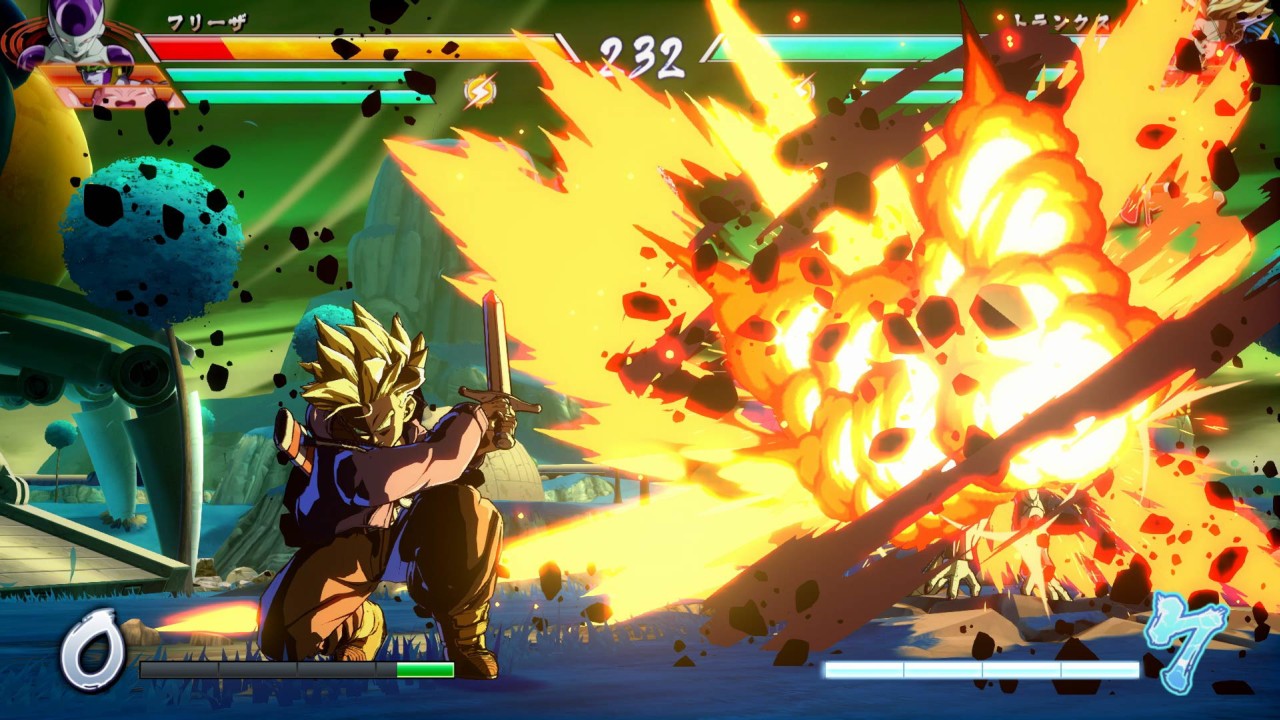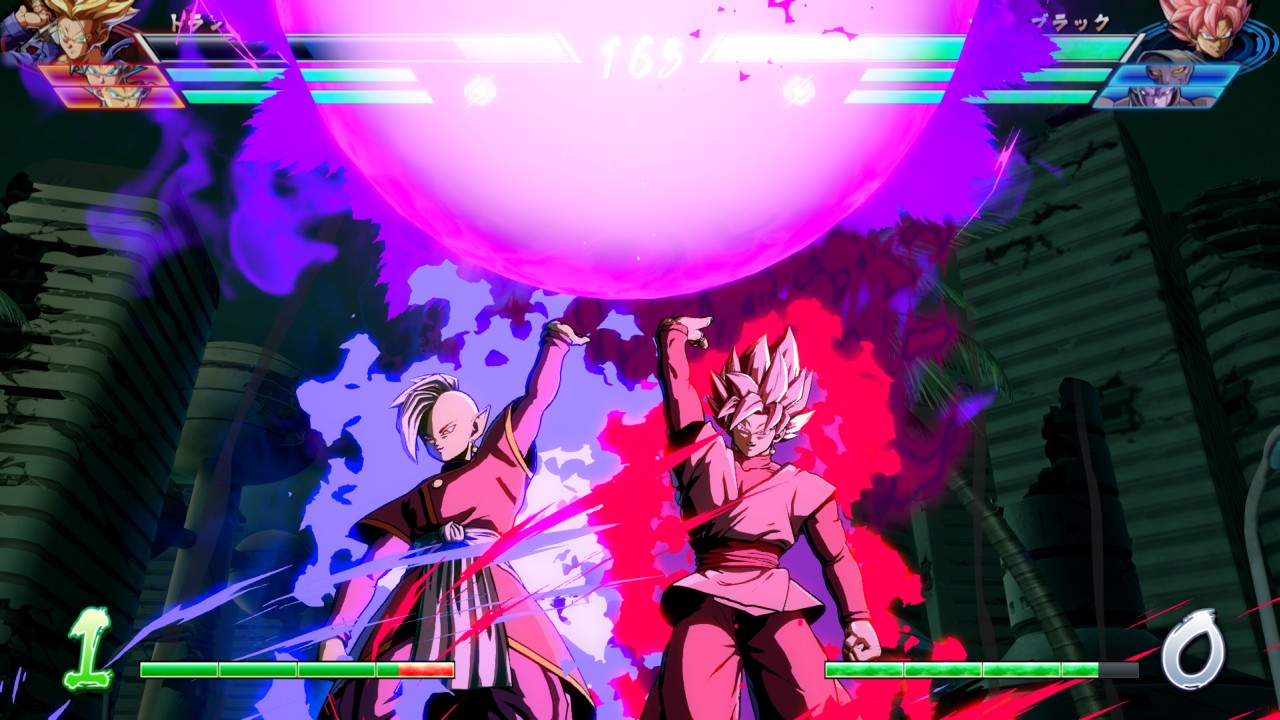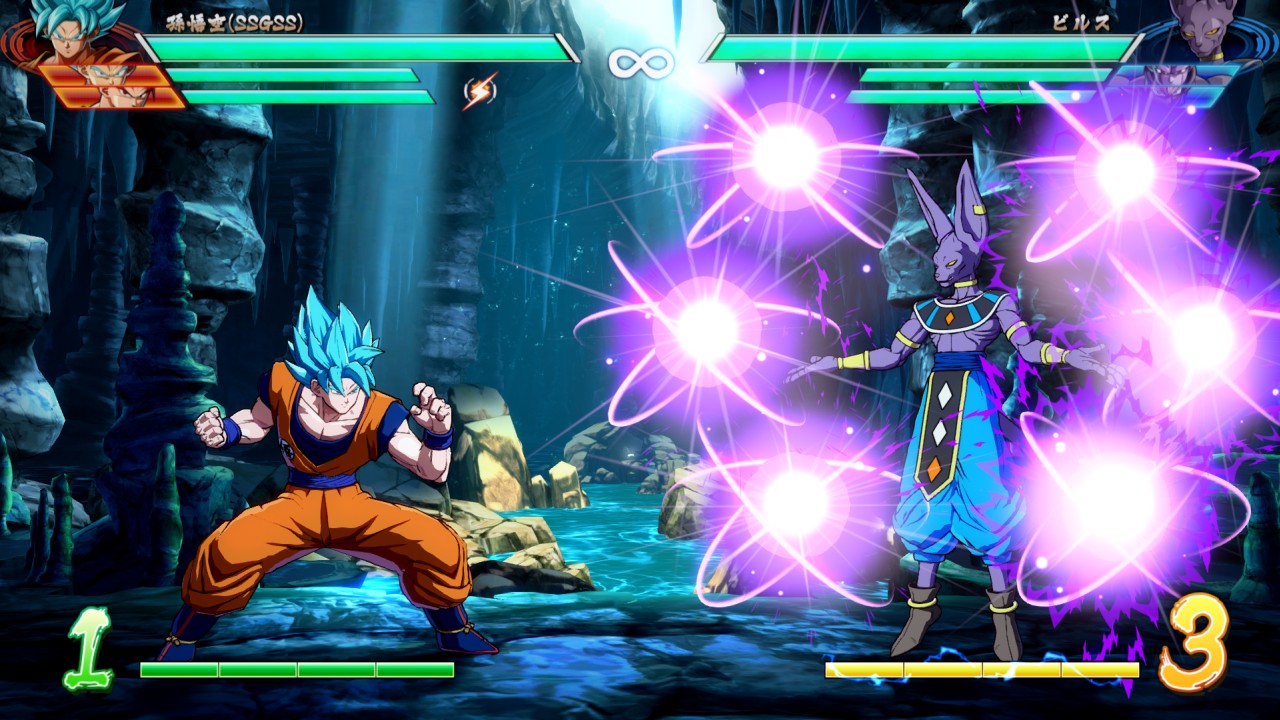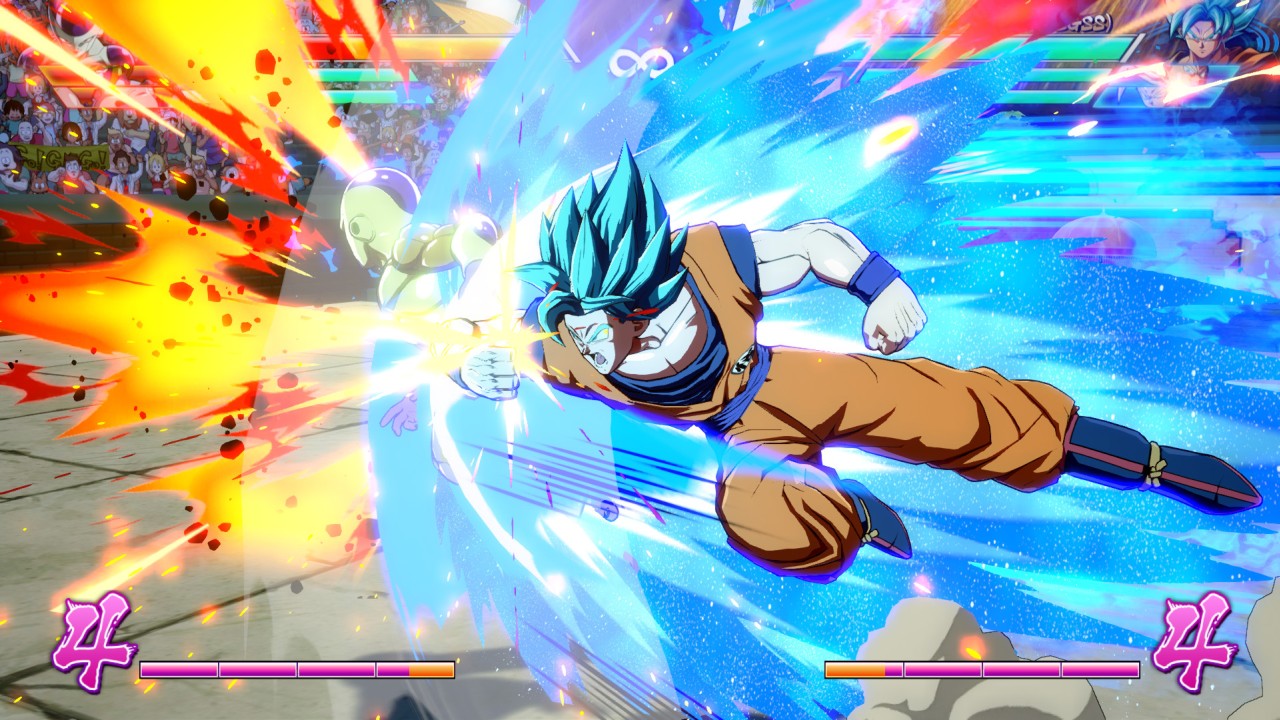Dragon Ball FighterZ Review
Dragon Ball is one of the most popular franchises to come out of Japan, spanning multiple manga, anime TV shows, films, toy lines and so on. Its global success and presence in multiple forms of entertainment has resulted in a large fan following and far-reaching familiarity. As such, the trademark has also found its way into the world of interactive entertainment on a large number of occasions. Much like Pokémon, the premise of the show made it easily adaptable, particularly in the action/fighting game genre. According to Wikipedia, as of December 2014 over 40 million video games based on the franchise had been sold worldwide. The latest title, Dragon Ball FighterZ, hopes to offer the most complete and polished entry yet.

FighterZ immediately stands out from competition, such as Street Fighter and Mortal Kombat, by offering 3vs3 tag-team style battles. It’s no longer about learning a few specific characters (or even just a single one) and sticking with them. You’ll be forced to be proficient with at least three fighters, and there are tons of other dynamics in play – who do you pick, when do you swap between them, how do you counter your opponent’s roster, and so on. There are also moves that allow you to utilize other members of your roster via assists, and moves that force your opponent to switch out their current fighter. This design adds a lot of depth to the game, and it joins the ranks of other tag-team fighting games in offering a very high skill ceiling that goes beyond just learning characters and controls. It may be inspired by games of similar ilk such as Marvel vs. Capcom, but FighterZ pulls off its unique teamplay mechanics effectively.
The 3vs3 design does flow into the control scheme as well. The basics are fairly straightforward – it’s essentially a six button fighting game, and one that utilizes D-Pad instead of analog inputs for directions. The standard light/medium/heavy attacks are joined by a Special Attack (Ki Blast), and Assist 1 and Assist 2 buttons. The assist buttons allow your other characters to swoop in (assuming they aren’t KOed) and help dish out some extra damage. Damage to your health bar leaves behind a blue portion, which can be regenerated if you tag them out for another combatant. Ki Blasts can be deployed by using a portion of your super meter which is filled up by doing damage or, if you dare, simply standing in place defenselessly and charging it up by holding a button combo. Mechanics such as dashing, Sparking Blast (which knocks opponents back), Vanish (teleporting you behind the enemy), and Dragon Rush (throw) round out the fairly extensive list of moves.
The good news is that, despite all these different mechanics, players won’t have to endlessly memorize combos for each character because they all share the same command inputs, even for most of the special moves. That means getting proficient with a certain combo will make it easily translatable to another character. That’s not to say that everyone fights the same, however. The cast includes numerous heroes, villains and androids from the universe, and they have styles that correspond mostly to their size. Characters like Krillin and Gotenks feel faster and more agile but have limited range. Buu, Ginyu, Cell and Hit are larger characters that lumber around the battlefield and need to time their strikes well. And of course the medium, all-round versatile fighters complete the roster with the likes of Goku, Gohan, and Trunks. Some characters such as Goku and Vegeta repeat with different versions of themselves, but on the whole the 20+ character selection seems varied enough.

To help things along even further, FighterZ offers an auto-combo system. Tapping on light/medium attacks will result in combos, which don’t deal as much damage as the more advanced ones, but at least let players feel like they are accomplishing something. Some auto combos even end with a super move. This is all good news because the action in FighterZ is fast and frantic, making the barrier of entry arguably higher than in other fighting franchises. While it’s quite enjoyable to string moves together, the game does have a few mechanics that don’t seem to be viable. The abovementioned manual way to charge your special meter is never used because you’re never standing in place and opponents can close in extremely fast. The second is the Dragon Ball special attack system, which requires you to land a combo with specific hit numbers. It’s quite poorly explained in the tutorial, and its usage is so extremely situational that you’d need to be already dominating your opponent to even earn enough Dragon Balls to execute it. Last, but certainly not least, is the fact that you cannot break out of combos. So once you’ve allowed a hit to get through, you’re at the mercy of the full, and often devastating, damage. It becomes a particular issue online, as you can imagine.
Dragon Ball FighterZ’s included tutorial does do a good job of introducing the mechanics, and is worth playing through. You could also just fire up the Story mode where the same tutorials are covered throughout the early battles. Story mode consists of three Arcs, telling the same story from the perspective of the Super Warriors, the Super Villains, and the Androids respectively. The first Arc has you, the player, possess Goku and fight to re-assemble the other heroes. It’s a surprisingly unique 4th wall breaking story structure, but it unfortunately goes nowhere other than acknowledging that the player’s soul is trapped within these heroes and lets them utilize their full strength. The characters fight against clones of themselves created by Red Ribbon Army, and there’s Android 21, a new evil character that’s causing trouble. In the other two Arcs, the player’s “soul” is linked to a different set of characters and offers an alternative version of the story from their perspective. Sadly, overall the story is fairly boring and written like a below-average episode of the TV show. Playing through alternate versions of the same narrative from three different perspective doesn’t add as many twists as you’d hope.
The campaign mode’s narrative is perhaps made more tedious because of the structure. Players travel across a number of small grid-like maps, where you must face a number of battles and eventually beat the boss of the area to move on to the next grid map. You can pick the shortest path to the boss, but this will leave your characters under leveled. Each fighter has an experience level that adds to their stats, and XP is gained by defeating opponents in standard matches. Only the characters that are involved in a match gain experience. As such, you’ll need to partake in a few optional fights, in order to get everyone in your roster up to snuff by switching out the lineup. Characters also carry over their damage from the previous battle, so they need to sit out a fight to regain health. The number of matches you have to play seems excessive, with over 10 hours needed to complete the story mode, and in that you basically do the same thing in all three arcs – fight, rescue characters, and move along a grid. Plus, without a difficulty setting, the majority of it is a cakewalk (with a few difficulty spikes along the way), which absolutely does not prepare you for the online battles to come.

Before you jump into the online mayhem though, you can try your hand at Arcade mode. It’s fairly shallow, with just three paths offering 3-5-7 matches respectively to get through. Still, if you’re looking to hone your skills against the CPU and compete for some leaderboard positions, it’s serviceable, though not as varied or imaginative as the Tower in MK for example. Once you think you’re ready to jump online, there are a few options available. World Match offers ranked and casual play, and is the main attraction that lets you face off against others from across the globe. There’s minimal lag when you’re actually in the game, but finding opponents often takes a very long time even during the launch week. Plus, servers have a tendency to go down on occasion. There’s also no penalty at the moment for quitting a match, so you’ll see plenty of perfect records on players that perhaps don’t deserve them. And it goes without saying that you should spend a lot of time in Arcade and Practice modes honing your skills before venturing into versus, as Story Mode does little to help.
Dragon Ball FighterZ main menu is actually a small hub world where character avatars run around, and you can walk over to the different game mode stations. Here you’ll also find a use for the Zeni, the game’s currency system that lets you unlock customization items, such as new avatars and stickers to use in chat. Lobbies host up to 64 players and it adds a sense of community as you can chat with others, challenge them to matches right there and then, and so on. Other than World Match, you can head to Arena Match mode to compete against others in your lobby only. It makes for more personal encounters, but with only 64 players in a lobby, that’s a very narrow pool of candidates with barely anyone playing this mode. If you want to play with friends locally it’s straightforward enough, but playing with them online requires a convoluted and tedious lobby process. Lastly, Circle Match creates a lobby for up to 8 players, where multiple battles can be played at the same time. Similarly with World Match matchmaking, there’s seemingly a number of connectivity problems where matches are unable to start, and lobbies cannot be created during launch week.
As much as it is a deep and challenging fighting game, FighterZ also shines in presentation. Similarly to the excellently executed South Park franchise from Ubisoft, this title does a great job of bringing the anime characters to life on screen. The art style for the characters is exactly as it is on the TV show, and the animations are all quite good. You get a choice of English or Japanese VO, and the story mode dialogue has plenty of humor and references that fans will enjoy. You can even unlock unique cutscenes depending on what roster of characters you take into battle, as they interact with each other. Plus, a lot of the super moves look very close to the ones seen in the anime. But a downside here is that as FighterZ is already a very fast paced and demanding game, the presentation is also overwhelmingly flashy. This matches the source material, but it also makes it really difficult at times to tell what is going on, as even the most basic attacks can produce tons of visual effects. There are many camera changes, and while it’s cool to see a Destructive Finish, or switch stages mid-fight, it all can be quite visually distracting. Still, it’s an undeniably good looking title.

Dragon Ball FighterZ is the latest and probably the best DBZ to date. The combat mechanics themselves will definitely take getting used to, and novices to the genre will be facing an uphill battle. Despite the auto-combo system, this is still a challenging game with an incredibly high skill ceiling due to the nature of 3 fighters being involved instead one, and their ability to tag-out and perform assist attacks. The visuals are fantastic, but can also be a deterrent, creating a chaos that’s a feast for the eyes but frustration for the thumbs. The story mode is unfortunately a bit undercooked, and drags on, but has a few fun interactions. The various other modes – arcade, practice, online matches – round out this well versed, if not particularly groundbreaking, fighting game package.
